I ‘ve used these recent posts to describe a semantic and linguistic environment in which academic authority figures encourage their acolytes to talk about material with which they’re unacquainted directly, applying to their engagement with it something called “theory” that never gets subjected to testing and possible refutation in practice, while using a standardized, opaque language to do so.
‘ve used these recent posts to describe a semantic and linguistic environment in which academic authority figures encourage their acolytes to talk about material with which they’re unacquainted directly, applying to their engagement with it something called “theory” that never gets subjected to testing and possible refutation in practice, while using a standardized, opaque language to do so.
Alix Rule and David Levine, to whose cogent report on what they’ve named “International Art English” I referred, compiled a database of the 13,000 art-world press releases sent out in email bursts to “art professionals” since January 1999 through e-flux, the New York-based subscriber network. Then they ran that material through some language-analysis software called Sketch Engine, developed by a company in Brighton, UK, to identify its recurrent phrases and other commonalities, turning those into a statistical profile. (See Andy Beckett’s January 27, 2013 piece in The Guardian (UK), “A user’s guide to artspeak,” which includes snippets from his interview with Rule and Levine.)
 The results are fascinating, delivered in highly readable prose, and well worth your time. One caveat, which does not impeach their findings: Rule and Levine insist that IAE constitutes “a unique language” that “has everything to do with English, but . . . is emphatically not English. . . . [W]hat ultimately makes it a language . . . is the pointed distance from English that it has always cultivated.” I have to disagree with them on this point, as I think most specialists in the field of linguistics would. With all its idiosyncrasies and neologisms, IAE so closely approximates English that it qualifies as a dialect thereof, rather than as a separate and autonomous language.
The results are fascinating, delivered in highly readable prose, and well worth your time. One caveat, which does not impeach their findings: Rule and Levine insist that IAE constitutes “a unique language” that “has everything to do with English, but . . . is emphatically not English. . . . [W]hat ultimately makes it a language . . . is the pointed distance from English that it has always cultivated.” I have to disagree with them on this point, as I think most specialists in the field of linguistics would. With all its idiosyncrasies and neologisms, IAE so closely approximates English that it qualifies as a dialect thereof, rather than as a separate and autonomous language.
![]() In fact, IAE ― which some call Artspeak ― is a subset of what we could dub International Postmodern English, or IPE, variant forms of which have arisen in almost all disciplines that fall within the arts and humanities, from literature to anthropology.
In fact, IAE ― which some call Artspeak ― is a subset of what we could dub International Postmodern English, or IPE, variant forms of which have arisen in almost all disciplines that fall within the arts and humanities, from literature to anthropology.
I’m pleased to note that Rule and Levine agree with something I asserted in my 1998 essay “The Destruction Business” ― that IAE has gatekeeping as one of its primary functions. Like IPE and its variants generally, it’s elitist, and exclusionary. No accident, that; it serves to create a cognoscenti, and to distinguish that in-group from the great unwashed. In a 1996 column for The Nation, Katha Pollitt asked, “How else explain how pomo leftists can talk constantly about the need to democratize knowledge and write in a way that excludes all but the initiated few?”
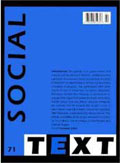 Regarding the then-recent, inadvertent publication by the unwitting editors of the journal Social Text of a blatant parody of such obscurantist writing, Pollitt added,
Regarding the then-recent, inadvertent publication by the unwitting editors of the journal Social Text of a blatant parody of such obscurantist writing, Pollitt added,
the comedy of the [Alan] Sokal incident is that it suggests that even the postmodernists don’t really understand one another’s writing and make their way through the text by moving from one familiar name or notion to the next like a frog jumping across a murky pond by way of lily pads. Lacan . . . performativity . . . Judith Butler . . . scandal . . . (en)gendering (w)holeness . . . Lunch!” (Click here for her article, “Pomolotov Cocktail.”)
Some of the locutions of IPE, and some of its underlying assumptions, have actually trickled down into everyday usage among swathes of the populace at large. (For example, an April 17 report in The Atlantic by Rebecca J. Rosen refers to an issue of a periodical seized by the Nazis and lately returned to a descendant of its original Jewish owner as “sort of a synecdoche for the person lost,” mingling the colloquial “sort of” with the highbrow, though how this improves on the more familiar word “surrogate” escapes me.) Despite that fact, IPE, which includes IAE, has more in common with the jargon or shoptalk of a specialized usergroup than it does even with a typical dialect, perhaps because it developed mainly out of written and printed expression rather than face-to-face verbal interchange. As a consequence (though not necessarily a desideratum), it thus narrows the readership and support base for criticism of the visual arts, photography among them.
Be that as it may, there’s no denying that IAE exists. Nor does it exist in a vacuum. Here you have the counterpart, in textual form, of the visual tropes that infest contemporary photographic work, about which I’ve written in another series of posts. Which came first ― theory-driven art by academically trained artists or academic theorizing about art? Asking the inevitable chicken-or-egg question gets us no closer to a useful understanding of groupthink in academe than it does to the origins of poultry.
More important to ask: Can we deem it sheer coincidence that this standardization of thought and expression in both modes came out of the same environment? I think not. They emerged at almost exactly the same time, from within the same hothouse ― the international post-secondary art-education system. Their virtually simultaneous birth merely manifests that sheltered microcosm’s belated recognition of something the hardscrabble working class has known for millennia: bullshit makes effective and inexpensive fuel, and if everyone’s using it the smell soon goes unnoticed.
Artists are not unaware of this phenomenon; indeed, no one who’s gone through the art-education production line over the past four decades has completely escaped the force-feeding of it. Most succumb to the blandishments of IAE, recognizing its usefulness in getting one’s foot in the art-establishment door, as Rule and Levine note. But some resist. The short-lived London collective BANK (no relation to Banksy, so far as I know), concerned with “the sinister implications of this particular linguistic manifestation,” mounted an exhibition in 1999 titled “Press Release,” in which they displayed the result of a 1998 project that involved their correcting, rewriting, commenting on, grading, and faxing back to the sources an assortment of art-world PR. Predictably, IAE comprises much of the content of those releases.
That those who create these lame semantic mashups often do so out of necessity, as a consequence of having to write about art they’ve never seen, may explain their actions, but doesn’t justify them, or the situation that engenders such behavior. Its net effect is not the enrichment of the discourse on art (including photography) but its impoverishment, with the consequent alienation of the audience from engagement with texts about art. That doesn’t bode well for the future of art criticism ― and, to the extent (considerable) that this tendency has trickled down into the discourse on photography, it doesn’t augur favorably for the future of photo criticism either.
•
I’d love to claim that it took great willpower on my part to resist the magnetic pull of IAE at its inception, and eternal vigilance to keep it from infiltrating my prose ever since. Alas, like George Washington I cannot tell a lie. From its very birth ― Rule and Levine consider the journal October as its cradle, making the date of its first issue, sometime in spring 1976, the birthday of IAE ― I have found IAE, with its recondite vocabulary and stilted syntax, not just off-putting but actually repellent. No aspect of it furthers anything I’ve sought to accomplish as either a working critic, historian, and theorist of photography and new media or as a prose stylist concerned with engaging my readership in an energetic discourse.
Avoiding it has therefore proved easy, especially as no editor with whom I’ve ever worked has required it from me. Indeed, given that, as noted in my last post, I’ve subscribed to e-flux since its debut in 1999, and have thus received (if not read) some 13,000 of their emails, most of them written in IAE, I may simply have an inbuilt immunity to jargon addiction. (Musician and composer Glenn Gould once defined jargon thus: “[A] fancy hermetic language of questionable usefulness even to specialists.”) Still, needless to say, there’s a price to pay when you opt out of the in crowd that way, even if effortlessly, and I’ve forked it over gladly. I’m a Marxist of the Groucho-deviationist tendency, meaning that I wouldn’t join any club that would have me as a member. For better or worse, now as ever, you’ll need no decoder ring to access my prose, and no secret handshake to enter the field of ideas in which I do my work.
•
Postscript: After the last sentence above I was going to add “English spoken here.” But I learned only recently of the passing, almost a year ago, on May 16, 2012, of the Québécoise photographer, writer, and editor Denyse Gérin-Lajoie. (Click here for an obituary by photographer Vincenzo Pietropaolo.) Which reminded me of something pertinent.
In the ’70s and ’80s Denise, with her life partner Jorge Guerra, made a small Montreal journal, OVO, into an influential platform for the discourse on photography ― one of a cluster of “little” magazines that served as important forums for photo criticism back then. Eventually, in the early ’90s, some years after its demise, I provided a letter of support for the placing of the OVO Archives at the Musée d’Art Contemporain de Montreal, considering it imperative to conserve such resources for future study.
OVO concerned itself primarily with Canadian photographers, and published mostly Canadian writers. But an essay I wrote for the New York Times in 1973 ― “Must They ‘Progress’ So Fast?” ― struck her as relevant to the emerging Canadian photo scene. So she asked me for permission to publish it in both the English and French editions of OVO in 1974, doing the French translation herself. This marked the first time anything of mine had achieved translation, a notable moment for any writer.
Because I’m bilingual francophone, Denyse sent me down drafts of her French rendition for comment and eventual approval before going to press. Somewhere along the line, she remarked in a note that during the translation process she’d discovered that I didn’t write in English. “You write in American,” she observed.
What a useful insight. Perhaps that’s why the siren song of International Art English falls on deaf ears around these parts. So I dedicate the last in this series of posts to Denyse Gérin-Lajoie, who taught me something about my relationship to language.
•
This post supported by a donation from the Estate of Lyle Bongé.


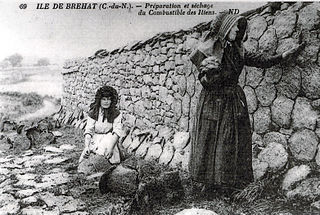
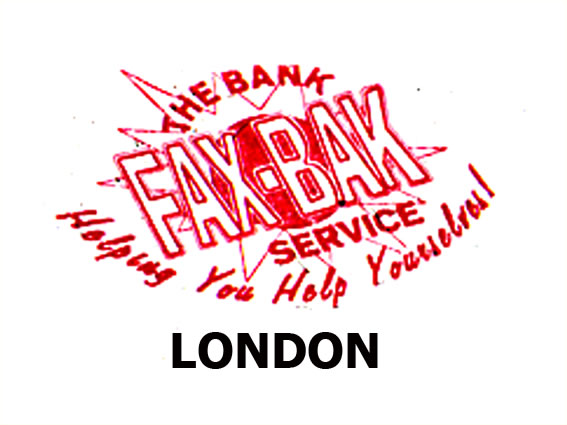
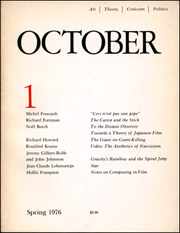
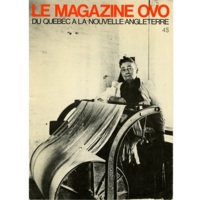




Leave a Comment